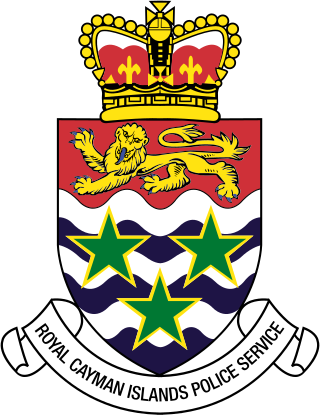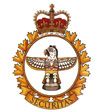
The Royal Canadian Mounted Police, commonly known in English as the Mounties, is the federal and national police service of Canada. As police services are the constitutional responsibility of provinces and territories of Canada, the RCMP's primary responsibility is the enforcement of federal criminal law, and sworn members of the RCMP have jurisdiction as a peace officer in all provinces and territories of Canada. However, the service also provides police services under contract to eight of Canada's provinces, all three of Canada's territories, more than 150 municipalities, and 600 Indigenous communities. In addition to enforcing federal legislation and delivering local police services under contract, the RCMP is responsible for border integrity; overseeing Canadian peacekeeping missions involving police; managing the Canadian Firearms Program, which licenses and registers firearms and their owners; and the Canadian Police College, which provides police training to Canadian and international police services. Despite its name, the Royal Canadian Mounted Police are no longer an actual mounted police service, and horses are only used at ceremonial events.

The Ontario Provincial Police (OPP) is the provincial police service of Ontario, Canada. Under its provincial mandate, the OPP patrols provincial highways and waterways, protects provincial government buildings and officials, patrols unincorporated areas, and provides support to other agencies. The OPP also has a number of local mandates through contracts with municipal governments, where it acts as the local police force and provides front-line services.

The Peel Regional Police (PRP) provides policing services for Peel Region in Ontario, Canada. It is the second largest municipal police service in Ontario after the Toronto Police Service and third largest municipal force in Canada behind those of Toronto and Montreal, with 2,200 uniformed members and close to 875 support staff.

The Halton Regional Police Service provides policing service for the Regional Municipality of Halton, which is located west of Toronto, in Ontario, Canada. Halton Region encompasses the City of Burlington and the Towns of Oakville, Milton and Halton Hills. As of July, 2020, the Halton Regional Police Service has over 1,000 members, including 718 sworn police officers and approximately 302 civilian and volunteer members. The service is responsible for policing a population of approximately 610,000 people in an area covering 692 square kilometers.

The York Regional Police (YRP) is the police service of the Regional Municipality of York, Ontario, Canada. YRP was formed in 1971 from the police forces maintained by the nine municipalities which amalgamated into York Region at the time. The force had a strength of over 1,500 sworn members and 618 unsworn members as of 2015.

The Ottawa Police Service is a municipal police force in Ottawa, Ontario, Canada. The OPS serves an area of 2,790 square kilometres and 1,017,449 people alongside several other police forces which have specialized jurisdiction.

The Barrie Police Service (BPS) is the police service of the city of Barrie, Ontario, Canada. It is made up of 218 police personnel and 94 civilians that serve a population of 135,711, as of 2011, in an area covering 100.71 km2 (38.88 sq mi).
Indigenous police services in Canada are police forces under the control of a First Nation or Inuit government.

Law enforcement in Canada is the responsibility of police services, special constabularies, and civil law enforcement agencies, which are operated by every level of government, some private and Crown corporations, and First Nations. In contrast to the United States or Mexico, and with the exception of the Unité permanente anticorruption in Quebec and the Organized Crime Agency of British Columbia, there are no organizations dedicated exclusively to the investigation of criminal activity in Canada. Criminal investigations are instead conducted by police services, which maintain specialized criminal investigation units in addition to their mandate for emergency response and general community safety.

The Royal Cayman Islands Police Service (RCIPS) is the standing police force of the British Overseas Territory of the Cayman Islands. The police force was formed in 1907 and currently (2009) stands at 343 enlisted officers, tasked with tackling Crime in the Cayman Islands.
Wapekeka First Nation is a First Nation band government in the Canadian province of Ontario. An Oji-Cree community in the Kenora District, the community is located approximately 450 kilometres northeast of Sioux Lookout. In January, 2008, the total registered population was 375, of which the on-reserve population was 355.

The Lethbridge Police Service, formerly known as the Lethbridge Regional Police Service, was established 1902, and serves the city of Lethbridge, a community in southern Alberta of approximately 101,482 in its 2019 municipal census.
Auxiliary constables or reserve constables are unpaid citizens in Canada who volunteer their time and skills to a police force. They are uniformed, unarmed members who perform a similar role to their UK counterparts in the Special Constabulary. Their main function is to supplement the police force with additional manpower, with duties varying by appointment, geographical location and the needs of the specific detachment/department.

Sri Lanka Police is the civilian national police force of the Democratic Socialist Republic of Sri Lanka. The police force is responsible for enforcing criminal and traffic law, enhancing public safety, maintaining order and keeping the peace throughout Sri Lanka. The police force consists of 43 Territorial Divisions, 67 Functional Divisions, 432 Police Stations with more than 84,000 people. The professional head of the police is the Inspector General of Police who reports to the Minister of Law and Order as well as the National Police Commission. The current Inspector General of Police is C.D. Wickramaratna.

The Nishnawbe-Aski Police Service (NAPS), also occasionally known as the Nishnawbe Aski Police Service is the police agency for Nishnawbe-Aski Nation (NAN). As of July 2020, NAPS has 34 detachments in NAN communities across the territory covered by Treaty 9 and Treaty 5 within Ontario. Mr. Roland Morrison was sworn in as chief of police in 2019.

2 Military Police Regiment is a unit of the Canadian Forces. It provides support to the Canadian Army within the Province of Ontario. It does not provide support to Canadian Forces Bases Borden, Trenton and North Bay and Canadian Forces Support Unit (Ottawa). The unit was initially created in the summer of 2006. Since then, the unit was officially established by a ministerial organization order (MOO) and a Canadian Forces organization order (CFOO) dated September 24, 2007. It is a "total force" unit of the Canadian Army Military Police Group (CA MP Gp). The term total force describes a unit which includes both Regular Force and Reserve Force members. 2 MP Regt is responsible for police, security and detention operations as well as police support in field operations. The unit headquarters is located at the George Taylor Denison III Armoury, more commonly known as Denison Armoury, in Toronto, Ontario. The strength of 2 MP Regt totals just under 300 personnel. Since the transfer of command authority (TOCA) on 1 April 2011, 2 MP Regt is under the full command of the Canadian Forces Military Police Group through the CA MP Gp, and attached operational command (OPCOM) to the 4th Canadian Division. The unit is commanded by a major as the commanding officer (CO) and the unit has a master warrant officer who is the regimental sergeant major (RSM). The CO of 2 MP Regt reports directly to the commander of the CA MP Gp, as well as the commander of 4 Cdn Div. The CO has a dual function as commanding officer and division provost marshal.
The Cobourg Police Service (CPS) is a municipal police force in Cobourg, Ontario, Canada. As of 2021, the service employed 35 police officers, 28 special constables, and 11 auxiliary constables. The force is notable for its tiered police service delivery model, which it adopted in 2018, and the V13 Policetech Accelerator, which it operates alongside the Northumberland Community Futures Development Corporation. The Accelerator facilitates research and development partnerships between small or starting businesses and the CPS.
The police in Canada's ranks differ according to the different police forces and depend on different laws at the federal, provincial, and municipal levels.













